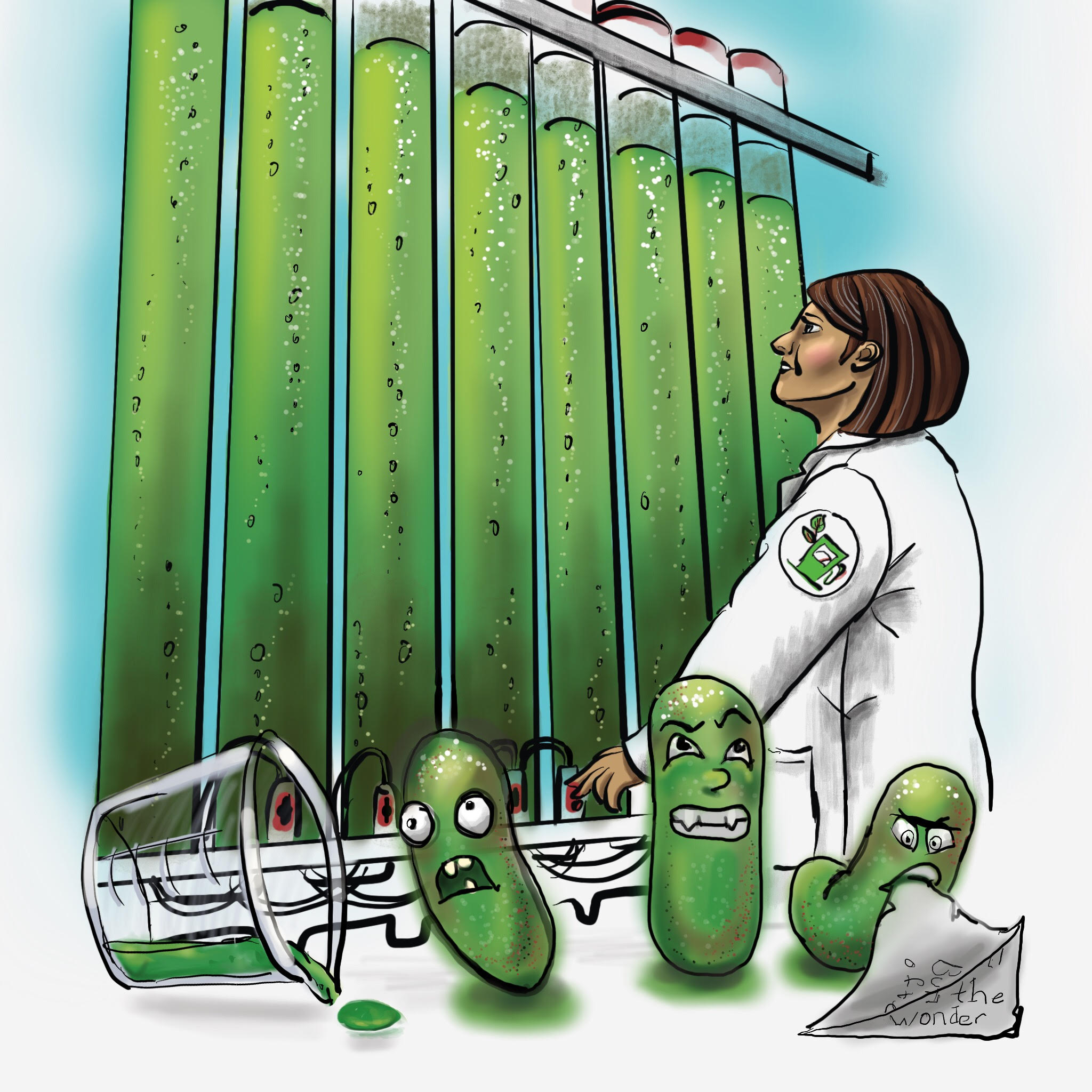Chandra Shekhar (1984)
“I’m now going to put the bacteria in,” said Dr. Adams. “Observe what happens.”
She added a drop of a greenish liquid to a beaker containing a thin paste made from dried leaves. The drop instantly diffused through the mud-like slurry, tinging it green.
“Now count to ten,” she said.
Just as I finished my count, a bubble formed at the bottom of the beaker and drifted lazily to the top and burst. Then another, then several more gurgled and popped, and soon the glass vessel seethed with bubbles like an overheated tea kettle.
“Are you heating the beaker somehow?” I asked, fascinated.
“No, the bubbles are carbon dioxide,” Adams replied. “It shows the mix is fermenting.”
The fermentation stopped as suddenly as it had begun. The slurry was gone; in its place was a coffee-like sediment over which floated a clear, emerald-green liquid.
Adams pointed to the fluid. “It’s 99.9% ethanol!” she said. “Fancy a taste?”
“What, with all those germs in it?” I shook my head emphatically. “No way!”

Illustration: Kristi Stokes
Adams took a small amount of the fluid and placed it on her tongue. She then closed her mouth and smacked her lips as I stared at her.
“Don’t look so worried!” she said. “The alcohol kills the bacteria. That’s the beauty of the method — it’s self-sterilizing.”
“But what if the bugs infect you before that happens?”
“No problem at all! The bacterium is just a harmless strain of E. coli transplanted with a silkworm gene. It eats only dried and powdered mulberry leaves.”
To drive her point home, she took a drop of the green bacterial culture and put it in her mouth and swallowed it. I was horrified, but she only smiled at me.
“Convinced now?”
I thought for a few seconds and came to a decision.
“Okay, we’ll fund you.”
Within five years her company, Alcoli, was shipping out a million barrels of biofuel each month. It was impressive, but we needed far more. The bottleneck was the mulberry plant; it grew too slowly.
We gave Adams permission to broaden her bug’s spectrum to digest other types of leaves. Alcoli’s biofuel output skyrocketed to five million barrels a day, but it still wasn’t enough. To eliminate petroleum, we needed that much each hour.
“Impossible!” Adams said. “That won’t give us enough time to dry and powder the leaves. Five million barrels a day is the limit.”
So it would have been, but for a janitor at the Alcoli plant who mistook a bottle of the green microbial culture for bathroom sanitizer.
The escaped E. alcoli didn’t do much for a few days; they just ate dead leaves and multiplied exponentially. Then one of them stole a gene for digesting green leaves from a caterpillar. Another learned how to spread through air from the swine flu virus. A third microbe infected a termite and developed a taste for wood. A fourth wandered into a beer gut and became immune to alcohol.
Soon a super-microbe with all four mutations emerged …
One morning I woke up to an unbearable stench of dry-erase markers. When I looked out my window, I couldn’t see any trees. In their place on the forest floor was a brownish sludge bedewed with billions and billions of droplets that twinkled like emeralds in the morning light …
So that’s how the Earth lost its entire plant biomass in a few hours.
On the positive side, we have enough biofuel — and booze — to last a century.
At least until someone drops a lighted match.
END


